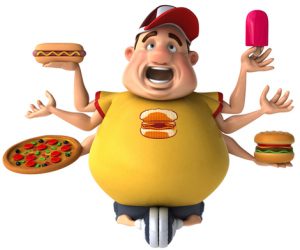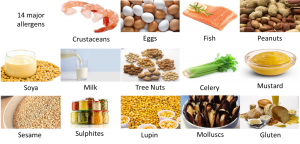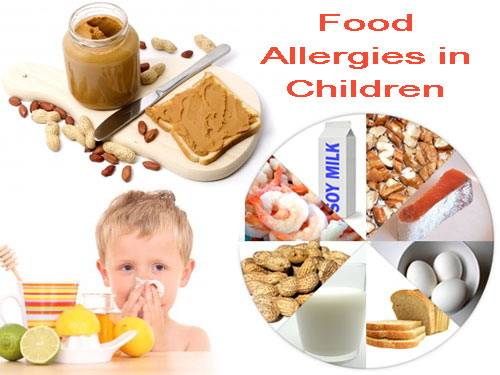How To Prevent Food Allergies In Children Diets. Although we are looking specifically at food allergies in children, it is important to differentiate between having a food allergy and having an intolerance or sensitivity to a certain food or food group.
Check out our HOLIDAY SPECIAL – Allergies and Concentration Problems In School Children. Non-invasive, painless and effective Biosonic therapy.

Food Allergy
A food allergy occurs when your child’s immune system sees a particular food as being harmful. The immune system, in trying to protect the body, produces antibodies to fight the food. The next time your child eats that “offending” food the body goes into overdrive creating specific allergy-associated antibodies called immunoglobulin. The symptoms can take two hours to several days to appear. These allergies can also be addressed with Bioresonance, a rediscovered, popular, non-invasive and effective treatment.
Food Intolerance
Food intolerance is not an immune system reaction. A Dietician explains that food intolerance can be divided into two categories.
- Firstly, an enzyme deficiency – e.g. lactose intolerance, where an enzyme that helps to digest milk is deficient.
- Secondly, a reaction to naturally occurring food chemicals – some substances, taken in large quantities, can cause the body to become intolerant to it. If you suspect your child may have a food intolerance, make a note of what they have eaten when they experience a negative reaction and try eliminating the offending food to evaluate how the child responds.
When a new mother is breastfeeding, some especially sensitive babies can have allergic reactions to food their mothers eat. Babies can be tested for allergies and the mother must eliminate these foods from her diet.
14 Common Allergens

A child could be allergic to any food, but these 14 common allergens count for about 90% of all reactions in kids:
- Cow’s milk
- Egg whites
- Egg yolk
- Gluten
- Yeast
- Wheat gliadin
- Cashew nuts
- Garlic
- Soya beans
- Brazil nuts
- Peanuts
- Fish
- Shellfish (shrimp)
- Celery
What Is Happening To My Child?
For any parent, a first-time allergic reaction can be a terrifying experience. Although some symptoms appear mild, severe allergies cause anaphylactic shock in a small percentage of children. Once again, symptoms can present within minutes, but in some cases, it can be delayed by hours. The symptoms of the allergic reaction can include:
- Itchy mouth and throat or itchy nose

- Coughing and wheezing
- Urticaria, a rash, hives, eczema
- Nausea and vomiting
- abdominal cramps
- Diarrhoea
- Bloating
- Swelling of throat and mouth, and
- inability to breathe
- Light-headedness or fainting
What Is Anaphylaxis
Allergy SA refers to anaphylaxis as “the sudden collapse of an individual following exposure to some agent in their environment”. These reactions are usually quick and can be a life-threatening situation and immediate medical attention should be sought.
Children at risk of anaphylactic shock must carry the necessary medication with them at all times and wear a medic alert bracelet.
Diagnosing Food Allergies
In some cases, it’s quite simple to determine up what food is causing a reaction in your child. But for positive confirmation, there are two tests widely used by doctors:
The Skin Prick Test

The skin on your child’s forearm or back is pricked with a needle and a tiny amount of the suspected allergen is allowed to enter the skin. If your child is allergic, a welt appears at the site.
The IgLE Rast Test
This is a blood test done by a laboratory. A lab will test for certain food allergies to see whether your child has antibodies to that food. These tests, however, need to be interpreted by skilled practitioners, so a doctor or dietician with a special interest and experience in allergies should read the results. To be reliable, the patient’s medical and dietary history must be taken into account.
No Real Cure For Food Allergies
A food allergy can’t be cured, so you will need to reduce or eliminate the problem foods from your child’s diet, depending on the severity of the reaction.
Consult your doctor before removing vital food groups from your child’s diet. Your doctor may suggest you eliminate a problem food for one year and then retest to see if your child is still allergic to that particular food or food group. Just remember to do your homework and substitute the ‘offending’ food with alternatives of similar nutritional value so your child does not become deficient in certain vitamins and minerals.
4 Allergies You Can Avoid
1. Egg Allergy
A common food allergy to eggs tends to first cause reactions in children aged two and three years. Fortunately, the allergy usually subsides by the age of seven.
Symptoms include dermatitis, wheezing, nausea, vomiting, diarrhoea, asthma, hives, and anaphylaxis in severe cases. Although the protein in egg white is mostly to blame, egg yolk protein is a problem for some children too. It’s for this reason that it is best to delay feeding eggs to children under nine months of age.
Egg-Free Tips & Tricks
Biscuit or cake recipes using 1 egg can be substituted with 2.5 ml baking powder and 15 ml water. For commercial cake, mixes use 15 ml vinegar, 15 ml water, and 2.5 ml baking powder.
Bread recipes that use only 1 egg can be made without an egg.
The binding effect of the egg can be substituted by adding mashed banana or grated apple.
2. Gluten Allergy
Parents who have children who are gluten intolerant will know how difficult it is to control their child’s diet because gluten is present in such an extensive range of products from bread, pasta, and cereal to biscuits, cakes, etc. a large selection of processed, packaged and bottled foods contain gluten as well. A gluten allergy means a child is allergic to the protein found in many wheat, barley, oats and rye-based products.
Symptoms included diarrhoea, stomach cramping, bloating, irritability, malabsorption of certain nutrients and even weight loss. If your child is diagnosed with Celiac Disease (often confused with IBS) then the following Gluten-Free Tips will be needed for your kid.
Gluten-Free Tips & Tricks
During baking, gluten traps air in the dough and helps hold in moisture once the product is baked. As a result, bread made with gluten-free flour is generally heavier, drier and crumblier. Gelatine is a useful binder in wheat-free baking and can provide moisture to batters or dough’s breadcrumbs can be substituted with mashed cornflakes or puffed rice. Crushed potato crisps can be used as a topping for dishes. Gluten-free muffins and biscuits have a better texture if they are baked in small sizes.
3. Milk Allergy
Cow’s milk is probably the most common food allergy. An allergy to milk is different to being lactose intolerant. Lactose intolerance is an inability to digest lactose but a milk allergy is a reaction to the proteins in milk, namely whey and casein and your child may be allergic to one or both of these. Cow’s milk is found in other forms of dairy like yoghurt, cheese, cream and butter too, so reading labels is once again very important.
Milk-Free Tips & Tricks
Products marked Parev are free of dairy products. Tofu can be substituted for cheese and is available in selected stores.
4. Nut Allergy
Tree nuts and peanut allergies are usually severe, lifelong and can lead to anaphylaxis. Doctors often recommended that children with a peanut allergy carry an epinephrine (adrenaline) pen in case of an emergency. Peanuts are not from the same group as tree nuts but form part of the legume family, making some children sensitive or allergic to peas, beans or soya bean products too.
Tree nut allergies are on the increase too, probably because they are so prevalent in processed foods today.
Nut-Free Tips & Tricks
Reading labels is essential – thoroughly investigate labels of all packaged and processed foods. Take extra care when eating out, and at Oriental restaurants or parties. Let your child’s caregivers, teachers, family members, and friends know and inform them on what to do in an emergency
Remember: Your child is special and regardless what your knowledge may be, consult your doctor to get a positive diagnosis.
“If your child experiences an allergy-triggered asthma attack, it’s important to consider also giving epinephrine and seek emergency medical treatment immediately in case the asthma symptoms are part of anaphylaxis” Jordan C Smallwood, MD
Are Allergies inherited?

You may inherit the tendency to have allergies but not necessarily a specific allergy as the parents. For Example: if you have hay fever from pets or food allergy, your child has a 50% chance to have some sort of allergy, however, it maybe not be the same one you may have. But if both parents have some sort of allergies the child’s probability jumps to 75% chance of some sort of allergies.
Do kids outgrow food allergies?
Yes, and no, some children do and some do not. Let’s look at the US. 20% Of the population reported reactions to food but most reactions are not allergic in nature. The most common type of adverse food reaction is “food Intolerance”. Food Intolerance does not involve the immune system. If your child has a food intolerance, it may mean he has trouble digesting a particular food.
Pay attention to what your child eats or drinks. The child may be plagued with digestive symptoms such as gas, bloating, diarrhoea, stomach cramps or even hyperactivity. (America Academy of Paediatrics – AAP).
Lactose Intolerance
One of the most common reactions is Lactose Intolerance. Children who are lactose intolerant lack the enzyme necessary to digest the sugar in cow’s milk and other dairy products. By far and very important; colouring and chemicals in foods and drinks.
Colouring and Chemicals

Food additives such as artificial food colours (AFC) and flavours and natural salicylates can trigger or exaggerate behaviour disorders and learning disabilities (Feingold 1973, 1975). AFC trigger or exacerbate problem behaviour related to ADHD in susceptible children.
It’s all up to you to make sure that your child gets good Nutritional Food Daily
Good nutrition plays an important role in fighting food allergies. These allergies can also be addressed with Bioresonance, a rediscovered, popular, non-invasive and effective treatment.
Please leave your comments in the block below. We value your input.
If you have any questions, please ask them here



Great article. This is super helpful, especially for my friends who have young ones and struggle with allergies. I will send them this link. Didn’t know celery can be an allergen! WOW, actually I think my nephew may suffer from some of these. Going to send him the link as well. Thank you for this!
Hi Vandana,
Thank you for your comment. My aim is to help people with their Nutritional needs. I just touched the surface on Allergies as there are so many other factors that must be kept in mind.
Wishing you best
Mariana